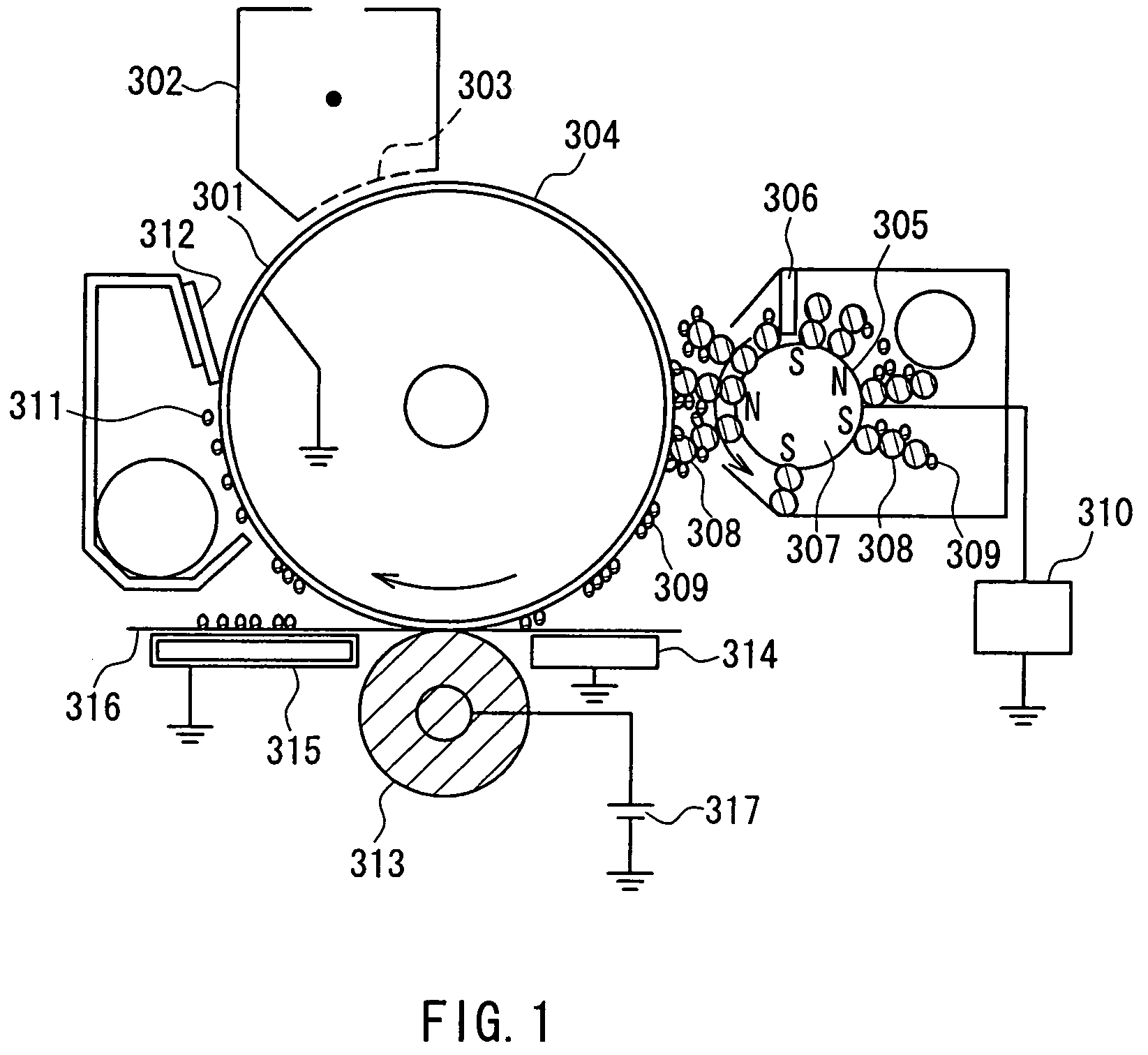Carrier for electrophotography
a carrier and electrophotography technology, applied in the field of electrophotography carriers, can solve the problems of inability to obtain sufficient shock resistance, poor adhesive strength of coating resins at the adhesive interface with the carrier, and the carrier may not withstand long-term use, etc., to achieve excellent toner consumption, high transfer efficiency, and high durability
- Summary
- Abstract
- Description
- Claims
- Application Information
AI Technical Summary
Benefits of technology
Problems solved by technology
Method used
Image
Examples
working examples
Carrier Production Example 1
[0084] First, 39.7 mol percent of MnO, 9.9 mol percent of MgO, 49.6 mol percent of Fe2O3, and 0.8 mol percent of SrO were milled for 10 hours using a wet ball mill, mixed, dried, and pre-baked by keeping at 950° C. for 4 hours. Subsequently, the obtained material was milled using the wet ball mill for 24 hours, granulated using a spray dryer, dried, and baked by keeping in an electric furnace in an atmosphere of 2% oxygen concentration at 1270° C. for 6 hours. Then, the material was cracked and further classified, so as to obtain a core material made of ferrite particles whose average particle size was 50 μm, and in which the saturation magnetization was 65 emu / g when a magnetic field of 3000 oersted was applied.
[0085] Next, 250 g of polyorganosiloxane including 15.4.mol percents of (CH3)2SiO units shown in Chemical Formula 4 below and 84.6 mol percents of CH3SiO3 / 2 units shown in Chemical Formula 5 below were reacted with 21 g of CF3CH2CH2Si(OCH3)3, an...
production example 2
Carrier Production Example 2
[0089] A core material was produced and coated by the same processes as in Carrier Production Example 1 except that the CF3CH2CH2Si(OCH3)3 was changed to C8F17CH2CH2Si(OCH3)3, and carrier 2 was obtained.
production example 3
Carrier Production Example 3
[0090] A core material was produced and coated by the same processes as in Carrier Production Example 1 except that conductive carbon (produced by Ketjenblack International Company: EC) was dispersed at a ratio of 5% with respect to the solid compound of the resin by using a pearl mill, and carrier 3 was obtained.
PUM
 Login to View More
Login to View More Abstract
Description
Claims
Application Information
 Login to View More
Login to View More - R&D
- Intellectual Property
- Life Sciences
- Materials
- Tech Scout
- Unparalleled Data Quality
- Higher Quality Content
- 60% Fewer Hallucinations
Browse by: Latest US Patents, China's latest patents, Technical Efficacy Thesaurus, Application Domain, Technology Topic, Popular Technical Reports.
© 2025 PatSnap. All rights reserved.Legal|Privacy policy|Modern Slavery Act Transparency Statement|Sitemap|About US| Contact US: help@patsnap.com



